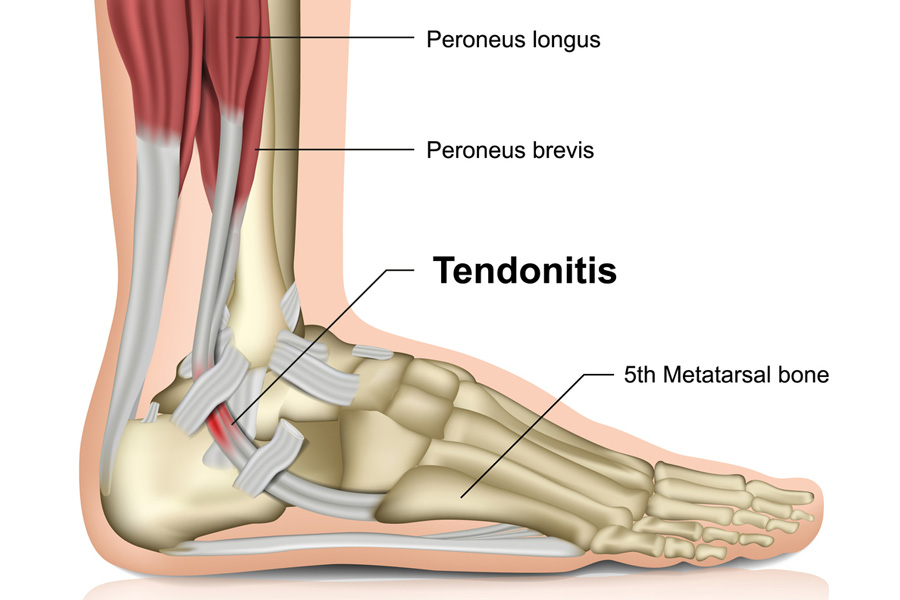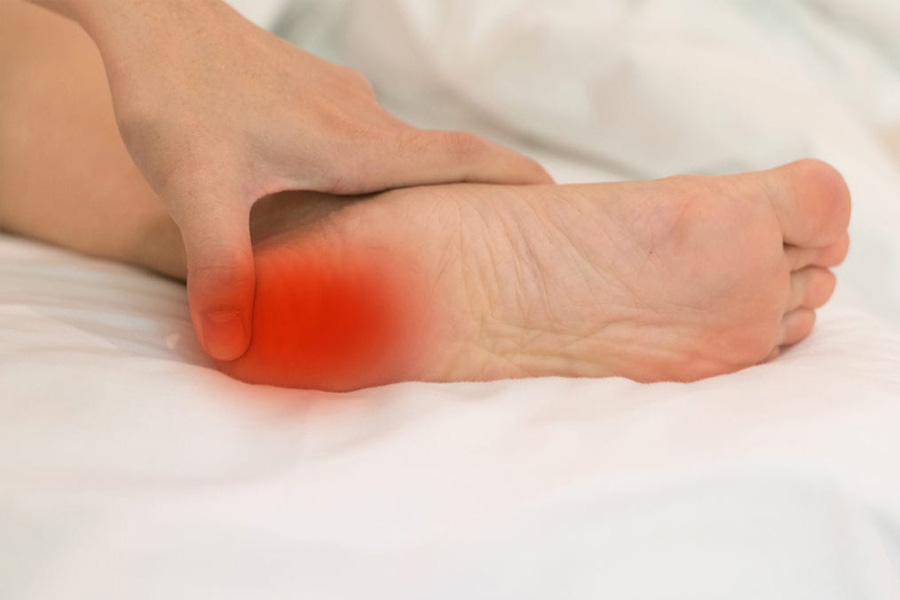
The peroneal tendon is responsible for connecting your lower leg to your foot, providing support for your ankle, and enabling you to rock your foot outward. Due to overuse or ankle injury, the tendon can become inflamed, a condition referred to as peroneal tendonitis.
Peroneal tendonitis— while not as common as other types of tendonitis and other foot and ankle problems— can cause equally incapacitating symptoms, namely pain, swelling, stiffness around your ankle, difficulty walking or running, and weakness. In some cases, peroneal tendonitis can even progress to tendon rupture. It is, therefore, essential to seek evaluation and treatment from your foot and ankle doctor (podiatrist) when you experience these symptoms.
Let’s explore some of the treatment options available for peroneal tendonitis, in addition to the standard pain medications.
The R.I.C.E. Method
Minor cases of peroneal tendonitis respond well to R.I.C.E. therapy, which stands for rest, ice, compression, and elevation, as outlined below:
- Rest- Since peroneal tendonitis is usually a result of overuse, rest is very important. If you continue to be active and put weight on your affected leg, you only risk aggravating the problem.
- Ice– Applying ice to the affected area helps relieve pain and swelling. It is critical that you apply ice to it immediately and for no more than 30 minutes every time.
- Compression– Compressing the area by wrapping it with an elastic bandage helps maintain blood flow, which is important for healing.
- Elevation- Keeping your leg elevated above the level of your heart helps prevent swelling, assists with draining fluid from the affected area, and speeds up healing.
Immobilization
Your podiatrist will also likely recommend immobilization, which is crucial for supporting your ankle and protecting it from (further) injury as your peroneal tendon heals. Immobilization involves you using an ankle boot or a snug-fitting brace, or even taping your ankle.
Physical Therapy
Physical therapy is essential for improving your strength, restoring ankle mobility, and ultimately ensuring a successful recovery.
Once your physical therapist has fully assessed your condition, they will tailor a treatment plan to your specific needs and difficulties. Your program will include exercises (e.g., calf stretching, ankle strengthening, and single-leg balance exercises) as well as a range of therapeutic modalities (e.g., massage therapy, temperature therapy, electrical stimulation, etc.) to alleviate your symptoms and help you gradually regain your normal function.
Surgery
Surgery (peroneal tendon repair) is a likely consideration if your symptoms don’t respond to a lengthy course of conservative treatments, or if your condition is accompanied by subluxation (dislocation) or rupture.
Peroneal Tendonitis Treatment in Cincinnati, OH
For expert treatment for peroneal tendonitis, schedule an appointment with one of our board-certified podiatrists here at Cincinnati Foot & Ankle Care. We pride ourselves on our commitment that goes beyond providing top-notch medical care for the gamut of foot-and-ankle conditions and injuries. As proponents of preventative care, we delight in sharing useful information to help patients understand the causes of these problems and empower them to be proactive about their foot-and-ankle health.
To get seen by one of our highly qualified podiatrists, call our location nearest you or use our appointment request form. We look forward to helping you move freely again!




